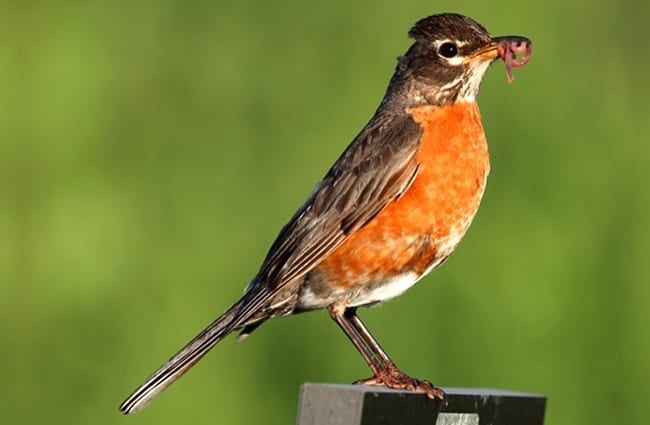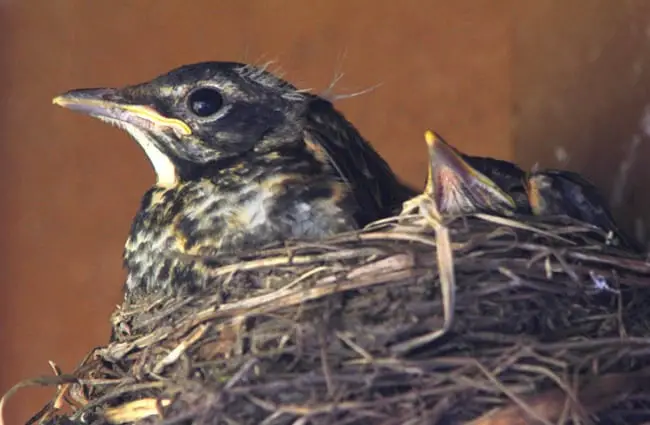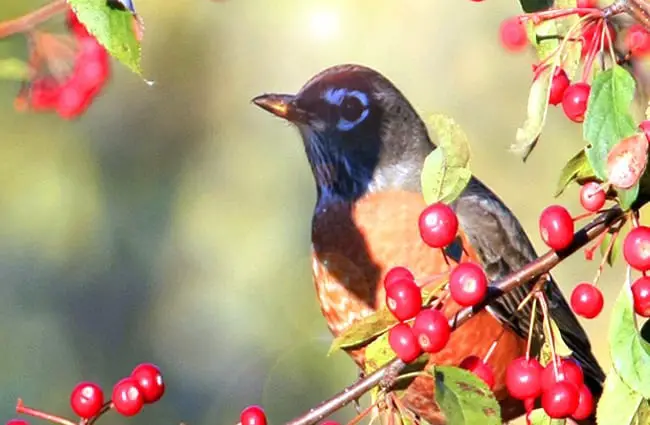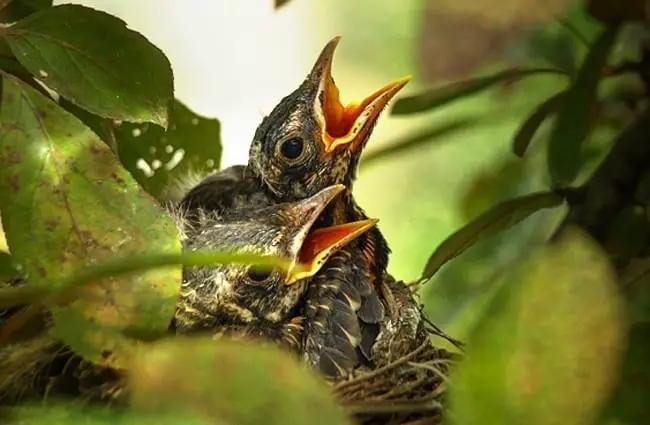A Comprehensive Guide to the American Robin
The American Robin, Turdus migratorius, is a familiar sight across North America, heralding the arrival of spring with its cheerful song and distinctive reddish‑orange breast. More than just a pretty face, this adaptable bird plays a vital role in its ecosystem and holds a special place in human culture. This guide dives deep into the life of the American Robin, exploring its natural history, behavior, and interactions with the world around it.

Habitat and Distribution
American Robins are remarkably widespread, found throughout North America from Canada to Mexico and into parts of Alaska. They exhibit remarkable adaptability, thriving in a variety of habitats. Commonly seen in lawns, gardens, and parks, they are equally comfortable in woodlands, forests, and orchards. Their preference is for open areas with nearby trees and shrubs, providing both foraging opportunities and nesting sites. They are also increasingly found in urban and suburban environments, demonstrating their ability to coexist with human development. During winter, their range shifts southward as they follow food sources, but many remain in their breeding territories if food is available.
Evolutionary History
The American Robin belongs to the thrush family, Turdidae, a group known for their melodic songs and preference for ground foraging. The evolutionary history of the American Robin can be traced back to Old World thrushes, with ancestors likely migrating across the Bering Land Bridge during the Pleistocene epoch. Over time, the species diverged, adapting to the unique ecological conditions of North America. Fossil records suggest that the American Robin has undergone relatively little morphological change over the past several millennia, indicating a successful and well‑adapted species. Genetic studies continue to refine our understanding of its evolutionary relationships within the thrush family.
Diet and Foraging Behavior
American Robins are opportunistic omnivores, with a diet that varies seasonally. In spring and summer, their diet is heavily focused on invertebrates such as earthworms, insects, caterpillars, and snails. Their distinctive foraging behavior, often seen on lawns, involves cocking their heads to one side and listening for the vibrations of earthworms beneath the soil. In fall and winter, their diet shifts to include berries, fruits, and seeds. They are known to consume crabapples, hawthorns, and other fruits, playing a role in seed dispersal. They sometimes gather in large flocks to forage on fruit‑bearing trees, creating a lively spectacle. They are also known to occasionally consume small amounts of suet or birdseed offered by humans.

Mating and Reproduction
American Robins are typically monogamous, forming pairs that may last for several breeding seasons. The breeding season begins in early spring, with males establishing territories and attracting mates through song and displays. The male sings a complex, varied song to establish his territory and attract females. The female builds a cup‑shaped nest, typically located in a tree or shrub, using mud, grass, twigs, and other materials. She often lines the nest with soft materials such as feathers and animal hair and lays between three and five bluish‑green eggs. Incubation lasts about 12 to 14 days, and both parents share incubation duties. The chicks are altricial, meaning they are helpless at birth and require extensive parental care. The parents feed the chicks insects and worms, and the chicks fledge after about 14 to 16 days. Young robins often remain dependent on their parents for several weeks after fledging, learning essential foraging and survival skills.

Ecological Role and Interactions
American Robins play several important roles in their ecosystem. As insectivores, they help control populations of various insect pests. As frugivores, they contribute to seed dispersal, aiding in the regeneration of forests and other plant communities. They are also prey for various predators, including hawks, owls, snakes, and mammals. Their presence or absence can be an indicator of ecosystem health. They often compete with other bird species for food and nesting sites and sometimes engage in aggressive interactions with other robins to defend territories and resources.
American Robins and Humans
American Robins have a long and fascinating history with humans. They are frequently depicted in art, literature, and folklore and are often seen as symbols of spring, renewal, and hope. Their cheerful song and bright coloration make them a beloved sight in many gardens and parks. However, they can sometimes be considered pests, especially when they consume fruits in orchards or gardens. They are also susceptible to certain diseases and parasites, which can be exacerbated by human activities. Providing clean water sources and avoiding pesticides can help support healthy robin populations.

Fun Facts
- American Robins can detect magnetic fields, which may help them navigate during migration.
- They often use the same nesting territory year after year.
- Their song is highly variable, with each individual having its own unique dialect.
- Young robins have speckled breasts, which gradually disappear as they mature.
- Robins are known to feign injury to distract predators from their nests.
- They can live for up to 13 years in the wild.
- The collective noun for a group of robins is a “flock,” a “troupe,” or a “worm of robins.”
For the Aspiring Zoologist
The study of American Robin behavior continues to reveal fascinating insights into avian cognition, navigation, and social dynamics. Current research focuses on the effects of environmental pollution on robin health, the role of genetics in song development, and the impact of climate change on breeding patterns. Analyzing robin populations can serve as a bioindicator of ecosystem health, providing valuable data for conservation efforts.
Encountering a Robin in the Wild
If you encounter an American Robin in the wild, observe it from a respectful distance. Avoid disturbing its nest or young. If you find a fledgling that appears injured or abandoned, contact a local wildlife rehabilitation center for assistance. Providing a source of clean water, such as a bird bath, can help support robin populations in your area.

Caring for Robins in Captivity
While not commonly kept in captivity, American Robins require specialized care. A large aviary is essential, providing ample space for flight and foraging. Their diet should consist of a variety of insects, worms, fruits, and seeds. Providing a source of clean water for bathing and drinking is crucial. Maintaining a clean and hygienic environment is essential to prevent disease. Avoid handling the birds unnecessarily, as this can cause stress. Enrichment activities, such as providing branches for perching and foraging opportunities, can help stimulate their natural behaviors.


The American Robin is a remarkable bird, embodying the spirit of spring and playing a vital role in the North American ecosystem. By understanding its natural history and behavior, we can appreciate its beauty and contribute to its conservation for generations to come.

![Red Angus Closeup of a beautiful Red Angus cowPhoto by: U.S. Department of Agriculture [pubic domain]https://creativecommons.org/licenses/by/2.0/](https://animals.net/wp-content/uploads/2020/03/Red-Angus-4-238x178.jpg)




![Red Angus Closeup of a beautiful Red Angus cowPhoto by: U.S. Department of Agriculture [pubic domain]https://creativecommons.org/licenses/by/2.0/](https://animals.net/wp-content/uploads/2020/03/Red-Angus-4-100x75.jpg)

